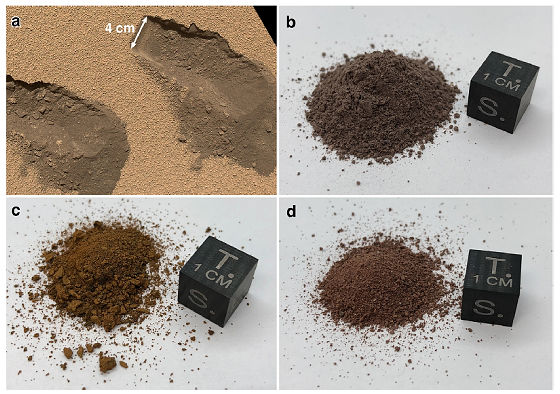Scientists artificially created 'Mars Sati' and sell for 1 kilo 2000 yen

Mars Global Simulant (MGS - 1) "was made by scientists and was sold in the future as imitation soil of Mars was reproduced as it is based on the latest data obtained from Mars probe etc. . NASA has ordered this soil and is to be used for future research for Mars exploration.
Mars global simulant MGS-1: A Rocknest-based open standard for basaltic martian regolith simulants - ScienceDirect
https://www.sciencedirect.com/science/article/pii/S0019103518303038?via%3Dihub
UCF Selling Experimental Martian Dirt - $ 20 a Kilogram, Plus Shipping - University of Central Florida News | UCF Today
https://today.ucf.edu/ucf-experimental-martian-dirt/
Scientists make artificial Martian dirt, will sell it to you for $ 20
https://mashable.com/article/mars-artificial-dirt-simulant-space/
It was the Astrophysicist team at the University of Central Florida (UCF) in Florida, USA that developed artificial Martian soil. According to the UCF press release, "This is not a fake news", the scientific team will use a standardized method to create MGS-1 simulating the soil of Mars based on scientific evidence It is said that it was established.
The use of MGS-1 lies in confirming on the earth whether crop cultivation is possible on Mars by using the soil which reproduced the same situation as Mars. Dr. Dan Britt, member of UCF 's Planetary Sciences Group (Planetary Science Group) says, "When we aim for Mars, we need food, water and other substances, and in developing that solution the idea We need a way to check if it works. "
NASA is planning how to raise potatoes on Mars and solve the food problem at Mars migration - GIGAZINE

Image (a) obtained by Mars probe Rover " Curio City " and MGS-1 (b) created by UCF, imitation earth "JSC Mars-1" (c) developed by Johnson Space Center, and Martian Garden A comparison chart of imitation earth " Mars Simulant " sold by the company. Compared to JSC Mars - 1 and Mars Simulant, MGS - 1 is made to have a composition that is closer to the actual composition.

In the production phase of MGS-1, first mix plagioclase, basaltic glass, pyroxene, olivine and magnetite (a), mix water and sodium metasilicate to knead the soil into paste (b). Finally, by drying and solidifying the paste (c), the same earth as Martian's surface is made.

UCF plans to sell this MGS-1 at 20 dollars per kg (about 2300 yen: by shipping fee), he said that he has already received orders from NASA. Dr. Britt said, "After you arrive at Mars, you do not want to fall into a situation where you can see that the method you were thinking on Earth does not work, what would you do then? It is ahead. "
Related Posts:
in Science, Posted by darkhorse_log







